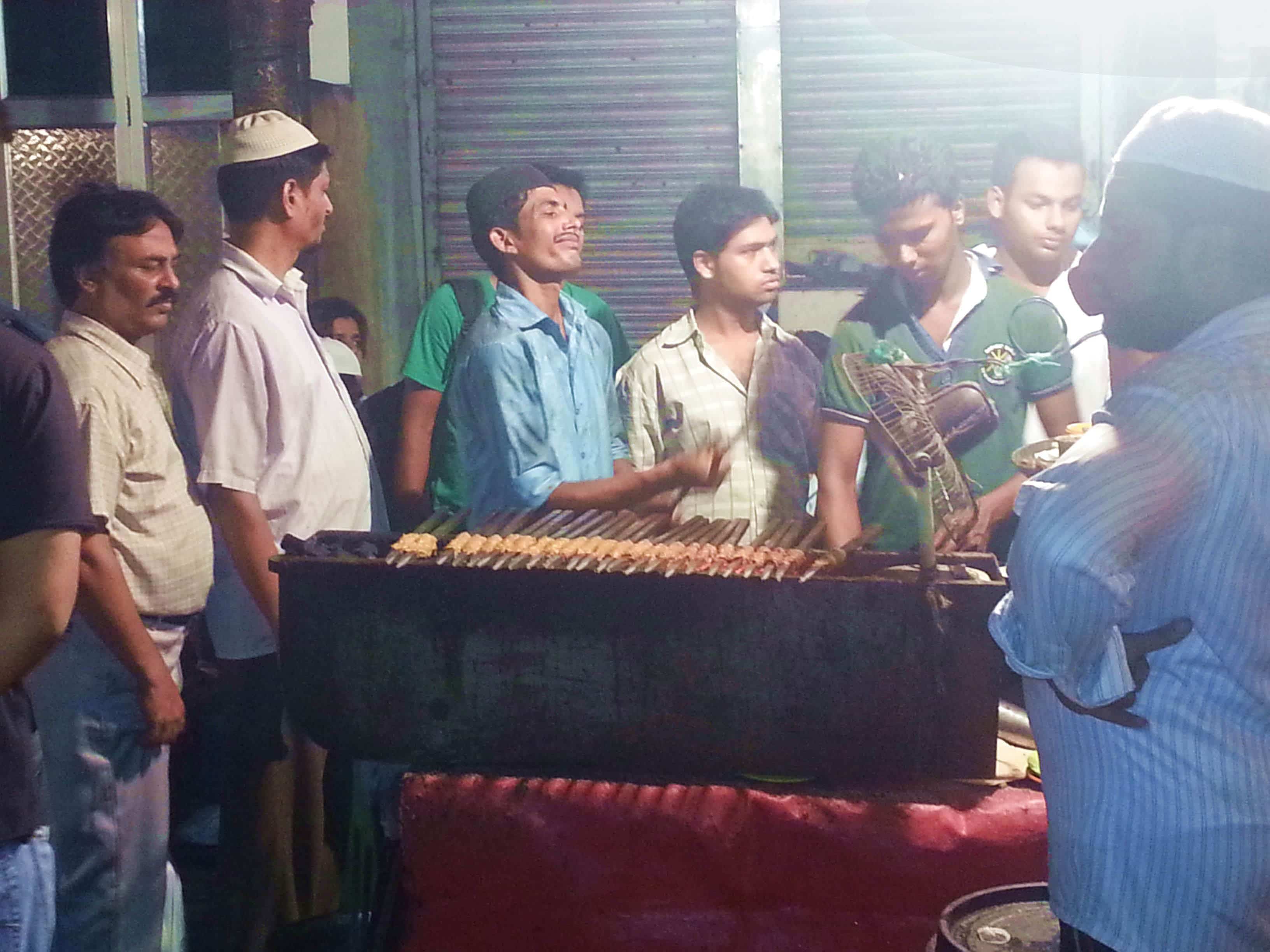Life
Feasting All Night Long

Kebabs are a hot favorite outside Jama Masjid
It’s the time for fasting, but also for feasting, and not just for devout Muslims observing the 30-day roza. For foodies all over India, Ramzan is the time to soak in the Eid spirit and what better place than the historic walled city of the national capital New Delhi with the majestic Jama Masjid looming in the backdrop.
Come dusk and the winding lanes of the Jama Masjid area come alive with the sights and sounds — and smells — of celebrations. Of chicken tikkas sizzling, mutton kebabs roasting over blazing fires, giant woks of puris and massive cauldrons of curries, biryanis, steaming milk, etc.
The crowds gather at iftar and continue until dawn, when the sehri meal is eaten.
While iftar marks the end of the meal at nightfall, sehri is the early morning meal before the dawn of another fasting day.
As important as it is to not let a morsel of food or a drop of liquid pass through one’s lips during Ramzan, it is equally important to have a nutritious and healthy diet before and after the fast.
The fast is traditionally broken with a small meal of dates, fruits and pakodas. And sehri usually constitutes specialties like khajla (round bread), pheni (spiral crusty cakes) and sheermaal (sweet buns, usually served with butter and jam), providing the required energy without wreaking havoc on the digestive system.
Khajla and pheni are made in pure ghee and soaked in milk overnight. Sugar is added at the time of consumption. Some people like to add dry fruits.
“People usually go to bed after eating the sehri; so the meal should be light and digestable, but at the same time energetic,” Javed Ali, a shopowner selling khajla in one of the many bylanes near Jama Masjid, said.
Between the two meals, is when the real feasting happens.
According to Ali, several non-Muslim customers from across the city throng to his shop every year. And the milling crowds in the lanes are evidence.
Markets around Jama Masjid, decked up and bustling with crowds, are open all night. The excitement is palpable as you enter one of the many lanes leading to the 17th century historic mosque, decorated in yellow lights. Hundreds of shops and eating joints line the narrow lanes, beckoning people from the neighborhood and beyond.
Post-iftar, the markets and streets are abuzz with people out for shopping and dinner and some others to meet friends over a Banarasi paan.
Nearby, popular eateries like Karim’s and Al-Jawahar restaurant do brisk business as families throng to them for dinner, while youngsters and those on shoestring budgets, head to kiosks outside these restaurants, grilling all types of meats.
Mutton seekh kebabs, shammi kebabs, chicken tikkas and fried chicken are usually served with rumali rotis and a generous dollop of mint chutney, chopped onions and chaat masala. A meal for two at any of the dozen kiosks costs around Rs.150 ($3).
For those with a sweet tooth, the area offers abundant shops and kiosks selling rabri faluda, kulfi, jalebi, phirni and badam milk.
Apart from gorging on the succulent kebabs and spicy curries, shopping is another highlight during this period.
After all, this is also the time to stock up on new clothes.
Women throng the several clothes, footwear and cosmetics shops in Chitli Kabar, Matia Mahal, Ballimaran Market and Meena Bazaar for Lucknowi Chikan suits, fancy sandals and imported cosmetics. The men hunt for kurta pyjama, salwar kameez, skull caps and sandals.
“Everyone wants to look their best on Eid. So, it’s an arduous job of finding that perfect attire or a sandal that stands out,” 21-year-old Delhi University student Saira Parveen said.
She hunted in several shops for an hour before she found the perfect mascara to match her turquoise blue suit. “This is how I reward myself after I have done my duty towards my religion,” she said.
